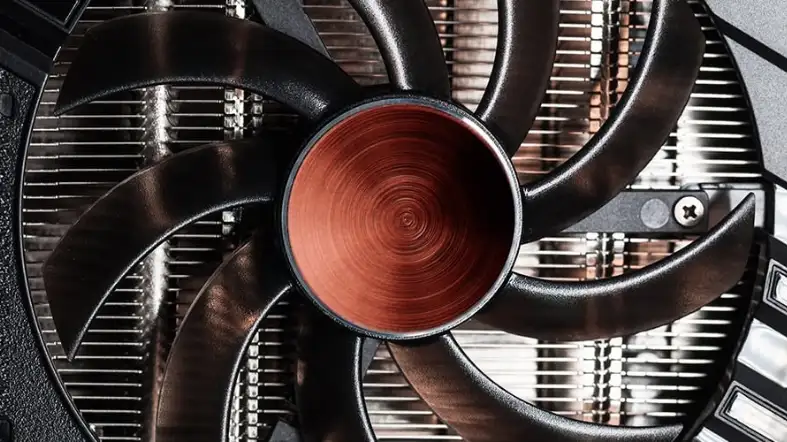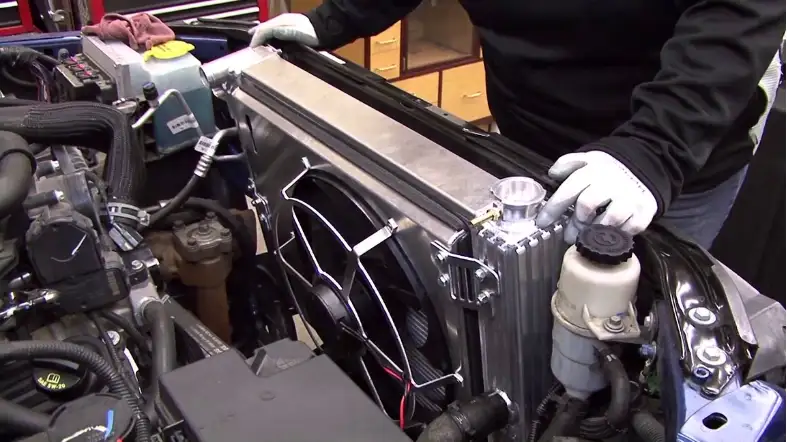You’re cruising down the road on a hot summer’s day, the sun beating down relentlessly.
Suddenly, your car’s temperature gauge starts to creep up, inching closer and closer to the red zone. If you’ve experienced this nerve-wracking scenario, fear not!
In this blog, we’re diving headfirst into the world of radiator fans and uncovering the mysteries behind their leisurely behavior.
From understanding the critical role of the radiator fan in your vehicle’s cooling system to exploring the potential culprits, we’ll leave no stone unturned.
What if the Radiator fan takes too long to come on?
If the radiator fan in your vehicle takes too long to come on, it could indicate a potential issue with the cooling system.

When it takes longer than usual for the fan to engage, several factors could be at play:
1. Faulty temperature sensor:
The fan is typically controlled by a temperature sensor that monitors the engine’s heat levels.
If this sensor is malfunctioning or sending incorrect signals, it may cause the fan to delay its activation.
A faulty sensor might need to be replaced to restore proper fan operation.
2. Electrical problems:
The fan’s activation relies on an electrical circuit, including relays, fuses, and wiring.
A loose connection, damaged wire, blown fuse, or faulty relay can disrupt the power supply to the fan, causing delays in its operation.
Checking the electrical components and ensuring they are in good condition is crucial.
3. Cooling system blockage:
A blockage in the cooling system, such as a clogged radiator or a restricted coolant flow, can impede the fan’s effectiveness.
If the coolant isn’t flowing smoothly through the system, it may take longer for the engine to reach the temperature threshold that triggers the fan.
Regular coolant flushes and radiator cleanings can help prevent such blockages.
4. Mechanical fan issues:
Some vehicles have a mechanical fan driven by the engine’s rotation, while others use electric fans.
In the case of a mechanical fan, a faulty clutch or a worn-out fan blade can lead to delayed fan engagement.
This issue requires inspection by a qualified mechanic to diagnose and fix the problem.
5. Software or control module problems:
Modern vehicles often have sophisticated engine control modules that regulate various functions, including the radiator fan.
Software glitches or a malfunctioning control module can cause delays in fan activation.
Updating the software or replacing the faulty module may be necessary to address the issue.
6. High ambient temperatures:
In extremely hot weather conditions, it is normal for the engine to generate more heat.
As a result, the fan may take longer to come on since the engine needs to reach a higher temperature threshold.
However, if the delay seems excessive or persists even in moderate temperatures, it is worth investigating further.
7. Fan motor failure:
The fan motor itself can experience wear and tear over time, leading to reduced efficiency or complete failure.
If the motor is not functioning properly, the fan may not engage promptly, causing overheating. Replacing the fan motor is often the solution in such cases.
Why the Radiator fan takes too long to come on?

If you notice that the radiator fan takes too long to come on, it could indicate potential issues that require attention.
Let’s discuss some possible reasons why this may occur:
1. Thermostat malfunction:
The thermostat is responsible for regulating the engine’s temperature.
If it becomes faulty, it may fail to signal the fan to turn on at the appropriate time. This delay can result in the engine running hotter than necessary before the fan activates.
2. Fan relay problems:
The fan relay acts as a switch, controlling the fan’s operation. When it malfunctions, it may cause delays in turning on the fan.
Faulty wiring connections or a worn-out relay can contribute to this issue.
3. Coolant level or quality:
Inadequate coolant levels or poor quality coolant can affect the cooling system’s efficiency.
Insufficient coolant may take longer to reach the necessary temperature for the fan to activate.
Additionally, if the coolant is old or contaminated, it may not effectively transfer heat, leading to delayed fan activation.
4. Cooling fan sensor failure:
The cooling fan sensor detects the engine’s temperature and sends signals to the fan to turn on when needed.
If the sensor becomes faulty, it may not accurately measure the engine temperature, causing delays in fan activation.
5. Fan motor problems:
The fan motor itself may have issues, such as worn-out brushes or faulty motor winding.
These problems can result in the fan not spinning at the required speed, causing a delay in cooling.
6. Electrical issues:
Faulty wiring, corroded connectors, or blown fuses can disrupt the proper functioning of the fan.
These electrical problems can introduce delays in the fan’s activation or prevent it from turning on altogether.
7. Engine control module (ECM) failure:
The ECM is responsible for monitoring various engine parameters, including temperature.
If the ECM malfunctions, it may not send the necessary signals to activate the fan promptly.
8. Mechanical obstruction:
A physical obstruction, such as debris or a damaged fan blade, can hinder the fan’s rotation.
This obstruction can delay the fan’s operation, leading to inadequate cooling.
How to Fix a Slow-Starting Radiator Fan?

If you’re experiencing a slow-starting radiator fan in your vehicle, it’s important to address the issue promptly to prevent potential overheating problems.
Here are some steps you can take to fix a slow-starting radiator fan:
1. Check the fuse:
Start by inspecting the fuse related to the radiator fan. A blown or faulty fuse can disrupt the electrical flow to the fan motor, causing it to start slowly or not at all.
Locate the fuse box, usually found under the dashboard or in the engine compartment, and refer to the vehicle’s manual to identify the correct fuse.
If you find a blown fuse, replace it with a new one with the same amperage rating.
2. Inspect the relay:
The radiator fan relay is responsible for supplying power to the fan motor. A faulty relay can hinder the fan’s performance, resulting in a slow start.
Locate the relay, usually found in the engine compartment fuse box or near the radiator, and check if it’s loose, corroded, or damaged.
If necessary, replace the relay with a new one compatible with your vehicle’s make and model.
3. Test the fan motor:
The fan motor itself may be the culprit behind the slow start.
To test the motor, disconnect the electrical connector from the fan and connect it directly to the vehicle’s battery using jumper wires.
If the fan starts spinning at a normal speed when connected directly to the battery, it indicates that the motor is functioning correctly.
In this case, the issue may lie elsewhere in the electrical system.
4. Check the wiring and connections:
Inspect the wiring harness and connections related to the radiator fan.
Over time, wires can become damaged, frayed, or disconnected, leading to poor electrical conductivity.
Carefully examine the wires for any visible signs of damage, such as exposed copper or loose connections.
If you discover any issues, repair or replace the wiring as necessary.
5. Test the coolant temperature sensor:
The coolant temperature sensor plays a crucial role in activating the radiator fan when the engine reaches a certain temperature.
If the sensor is faulty, it may not send the proper signals to the fan, causing a slow start or irregular operation.
Consult your vehicle’s manual to locate the sensor and use a multimeter to test its resistance or voltage readings.
If the readings are outside the specified range, consider replacing the sensor.
6. Check the fan blades:
If the fan blades are obstructed or damaged, it can cause the fan to start slowly or struggle to spin properly.
Inspect the blades for any debris, such as leaves or dirt, and clean them thoroughly.
Additionally, check for any bent or broken blades that may impede the fan’s performance.
If necessary, repair or replace the fan blades to ensure smooth operation.
7. Consult a professional:
If you’ve followed these steps and are still unable to resolve the issue, it’s advisable to consult a professional mechanic or technician.
They have the expertise and specialized tools to diagnose and repair more complex problems related to the radiator fan or the vehicle’s electrical system.
FAQs
What Is A Radiator Fan, And Why Is It Important?
A radiator fan is a component of your vehicle’s cooling system that helps to regulate the temperature of your engine.
When your car’s engine gets too hot, the radiator fan kicks in to help dissipate that heat and keep things running smoothly.
Without a functioning radiator fan, your engine could overheat and cause serious damage.
What Can I Do To Fix A Radiator Fan That Takes Too Long To Come On?
If you’re experiencing issues with your radiator fan, the first thing you should do is have it inspected by a qualified mechanic.
They can diagnose the root cause of the problem and recommend the best course of action for fixing it.
Depending on the issue, this might involve replacing the fan motor, the coolant temperature sensor, or other components of the cooling system.
Are There Any DIY Fixes For A Radiator Fan That Takes Too Long To Come On?
While there are some DIY fixes that you can try for a slow-to-start radiator fan, we generally recommend leaving this type of work to the professionals.
This is because there are a lot of different factors that can contribute to a fan not working properly, and it can be difficult to diagnose the problem without the right tools and expertise.
If you attempt to fix the fan yourself and don’t address the root cause of the issue, you could end up causing more damage to your vehicle in the long run.
Is It Safe To Drive With A Radiator Fan That Takes Too Long To Come On?
It’s generally not recommended to drive with a radiator fan that’s slow to start.
This is because if your engine overheats, it could cause serious damage to your vehicle and even result in a complete breakdown.
If you notice that your radiator fan is taking longer than usual to kick in, it’s important to have it inspected by a mechanic as soon as possible to avoid any potential issues.
Conclusion
If you’ve noticed that your radiator fan takes too long to come on, it’s essential to address the issue promptly to prevent potential overheating and engine damage.
The radiator fan plays a crucial role in maintaining the optimal temperature of your vehicle’s engine, especially during hot weather or heavy usage.
Regular maintenance and routine inspections of your cooling system are key to keeping your vehicle in top shape.
By paying attention to any unusual signs or symptoms, you can address potential problems early on and ensure the longevity and reliability of your vehicle.
